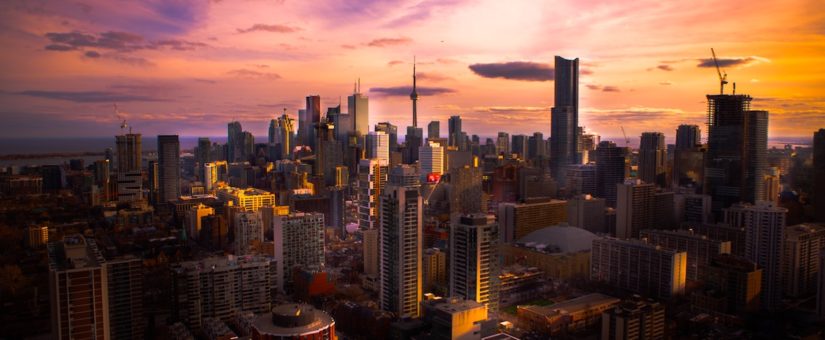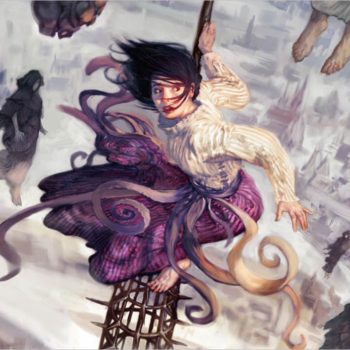
The City in Time: A Review of What We See in the Smoke
- Posted by Augur Blog
- On June 19, 2019
- 0 Comments
Reviewed by Catherine Lu
Although the same city in different time periods can be unrecognizable, Ben Berman Ghan’s Toronto in What We See in the Smoke has kept some street names and locations even as the physical place moved from Earth in 2016 to Janus in 3036.

There are seventeen short stories in this collection, or seventeen chapters in this novel. Each story-chapter can be read as a standalone that focuses on one to a few people. One story offers a glimpse into what it’s like to run a bookstore in a time of unrest. Another is about stealing copyrighted dreams. They don’t have to be read in chronological order! You could start at the end of the book where humanity has taken to the stars, and work your way back to present day.
A chapter I recommend is “Dreaming Darkly”. I can only imagine what it would be like to have an advertising android as a roommate, getting bombarded daily with whatever it’s programmed to advertise. However, it’s a bit strange that advertising machines get an apartment instead of some company mass storage facility when they’re not on the streets, being non-sentient and all. Living with a walking ad does give one discount on rent, and we all know what rent is like now. Rent in 2086… The book doesn’t mention it but there should be a whole chapter on finding a downtown property.
After a mutually destructive atomic war wipes out much of civilization, Toronto’s geothermal grid is discovered to be functional in “Closing Time,” where humanity starts expeditions down to the scarred Earth. Future Bistro, a landmark many of us recognize, survives the bombing, scaring explorers with a holographic welcome animation. This sustainable vision of the city is possible with current technology. But policy is preventing geothermal cities. With free electricity comes automation (or so this story goes) and the dark side of technological advances renders much of the working class jobless.
Taking the stance of “What could possibly go awkward?” with tech—especially with spaceship computers that have cloning permissions—Chapter 16 goes to war with space. This story takes place en route from Earth to Janus as humanity finishes its great migration, leaving a ruined Earth behind. It’s not exactly wrong for the ship AI to save itself and thousands of other sleeping humans by sacrificing the clone workforce, is it? The ship survives, but Janus has to deal with a new species of space-proof humans that the ship engineered. Bioethicists will have a headache for decades.
After 1020 years, High Park is demolished again in “And the Stars, Do They Still Shine?” It was a fitting scene to end on, with Free Time’s Cafe on College and the rest of Toronto on a tidally locked planet with two moons. The new Torontonians don’t remember what Earth was like, but they visit the same landmarks with the same names, unknowingly repeating history.
There’s probably flying cars and cloning on Janus—the extremely sci-fi settings. There’s also the simplicity of riding a bike outdoors in 3036. I wish some stories could have been longer and gone more in-depth on the world-building to support the excellent characters. This book also holds a challenge: even if nuclear war happens, Toronto will go down in history as a pinnacle of sustainability and hopefully better living conditions than some of Ghan’s settings.
LIKE THIS POST? Read Ben’s post on cyborgs, Blade Runner and Larissa Lai.




0 Comments